Francis Poulenc & Friends
The music of Francis Poulenc has a sense of 'quirky sensuousness' (my own term), which bears no resemblance to the more avant-garde offerings many of the other great Western composers produced, from the Second Viennese School onwards. This makes him a particularly distinctive twentieth century voice, which, despite some desparaging remarks from those who see him as somewhat 'backward', has great charm and many hidden depths.
He was also quintessentially 'French' in that he was one of the last great Mélodie composers (a French art-song, equivalent to the German Lieder but which developed completely separately), and so understood the importance of the connection between the French language and music, yet used this compositional style in many of his larger works, even those without voices - but you can easily imagine them creeping in without anyone noticing.
And of course, he was openly gay, yet was known to have had relationships with women, and even became a father at one point. He was also born and raised a Roman Catholic. This created an understandable tension between his faith and his feelings, and would have been a huge influence on his compositional style, especially in his later years when the deaths of friends pushed him towards creating more sacred works. The tag 'half monk, half delinquent', used to describe him in a 1950s newspaper article was probably very apt.
Anyway, here he is in another EMI Classic Archive. The fascinating, yet rather sad thing about this DVD, is that the recordings in which he is being interviewed, and seen performing are all made in the final 4 years of his life. He would be dead within two months of the performance of the Concerto for 2 Pianos and many of the following items are obviously televised tributes by those who had worked closely with him.
The quality of the sound and vision is quite varied, with many of the recordings looking as if a camera was pointing at a monitor of the original broadcast, yet with the historical importance of these films many of these problems can, and indeed should be overlooked.
I was a bit confused by the order of the programming, as the menu items on the DVD separates the works into 'Concertos', 'Songs' etc, bearing no relationship to the chronological order of the recordings within the booklet. I tried to follow the booklet order, and this is satisfying enough.
The first item is a great little recording of Poulenc being interviewed by the organist and critic Bernard Gavoty, interspersed with excerpts from a few of his works. In the chats, Poulenc comes across as a man with a great sense of humour, but someone who takes his work very seriously indeed when asked the right questions (the audience throw a few very academic queries towards him and his answers are immediate and enlightening). Gavoty once makes the mistake of calling the Flute Sonata a 'Sonatine', which brings the riposte'"Why make it smaller!".
He also talks about the more religious aspects of his works, which had become more important to him by this time, explaining that there he feels a direct link between great sacred art and the senses, even the more base ones. Sensuality is certainly something that permeates much of his music.
In the first programme we meet Jean-Pierre Rampal, the great French flautist with an immediately recognisable sound, and for whom Poulenc wrote his sonata. Rampal himself is questioned by Gavoty and is asked what he thinks of the work. Rampal describes it as "..tastefully difficult. It could very well have been written by a flautist".
We only have the second movement in this concert, but even this short piece with the two instruments encompasses much the the sound world Poulenc had made his own.
The soprano, Denise Duval is also featured. She was a great favourite of Poulenc, and he wrote many of his works specifically for her, including 'La Voix Humaine' (deliberately not offered to Maria Callas) and a major role in his opera 'Dialogues des Carmélites'. She is obviously suffering from a bad cough, but doesn't let that get in the way of a great performance of excerpts from these works.
Duval also features in the next item, two songs from 'La Courte Paille', and she even has to turn pages for Poulenc, so money may have been a little tight.
Following this is the first major work played in full, and it's absolutely fantastic. Poulenc and Jacques Février perform together as soloists in the Concerto for 2 Pianos, which they had premiered 27 years beforehand. Despite some experimental and very wobbly camera effects (attempting to get both keyboards in shot at the same time), and a few mistakes, this is one of the best overall performances of this work that you will get to see.
Within two months of this, Poulenc had died from a heart attack, with many plans unfulfilled, especially his aim to compose sonatas for every wind instrument.
Next up is a short, but very moving tribute from the cellist, Maurice Gendron as he performs his own arrangement of one of Poulenc's Chansons Gaillards.
Two months later, Rampal was filmed playing the complete flute sonata, and this too is a fine tribute to the composer. I became instantly familiar with the piece having listened to multitudes of people practising it, and am actually rather fond of the work (which, coming from a fiddle player, says quite a lot).
More short piano works and some splendid Mélodie action from Gabriel Bacquier, the master of the art form, follow. The communication this man has with an audience means he would be able to sing from the French telephone directory and make it mean something. It's a great addition to this DVD.
Finally, we are treated to a fine, if rather sterile performance of the Organ Concerto. The sterilty doesn't come from anything musical though, it's just I've always imagined this piece to be more effective within the surroundings of a huge Gothic cahthedral, or at least some sort of large 'place of worship'. Here, Jean-Jacques Grunewald plays on a modern electronic concert-hall instrument, set up behind the fiddles within a modern concert hall environment. The premiere was actually in the Salle Gaveau in 1938, and so in a way, we have gone back to the opening item in the programme.
Shutting your eyes and turning up the volume however works wonders, and you'll enjoy it a lot. A young Georges Prêtre (in comparison with his stint in the 2010 New Year Concert from Vienna) does a great job in manipulating the ORTF orchestra (now know as the Orchestre National de France) and brings the DVD performances to a rousing conclusion.
This DVD is a fascinating historical document, and will be a valued addition to any collection for those interested in the development of twentieth century classical music.
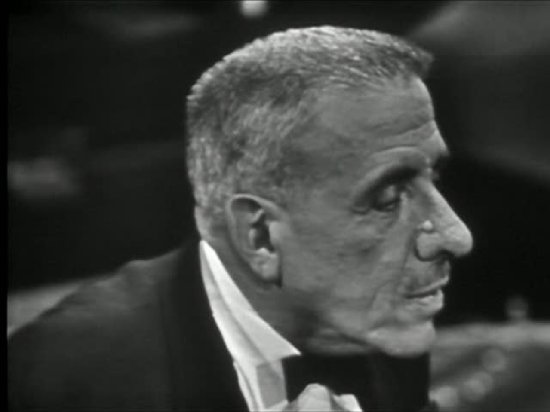
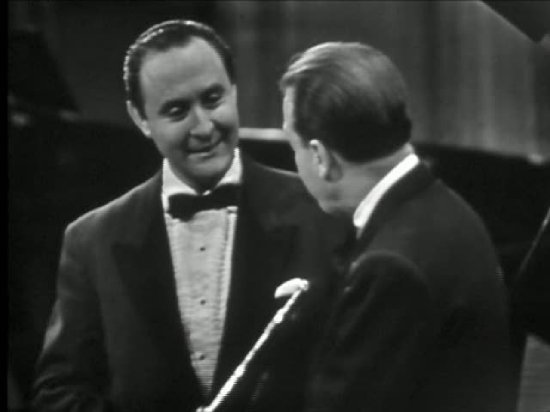


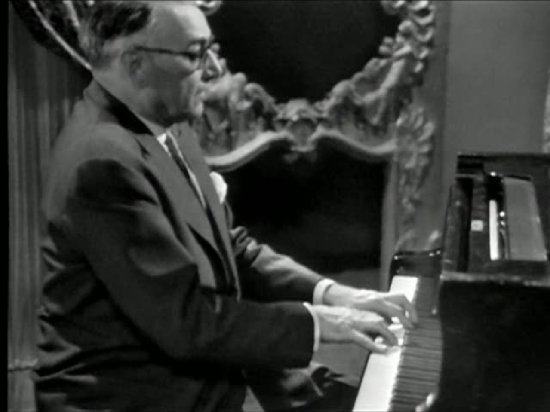
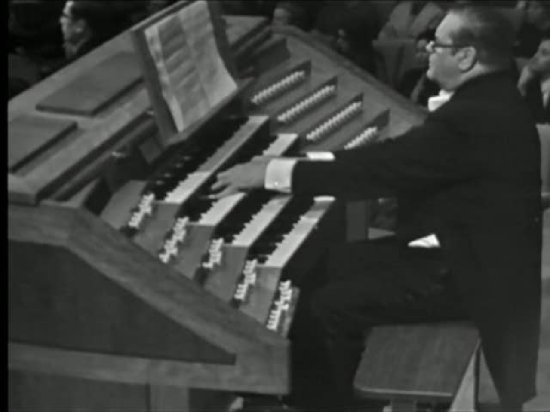
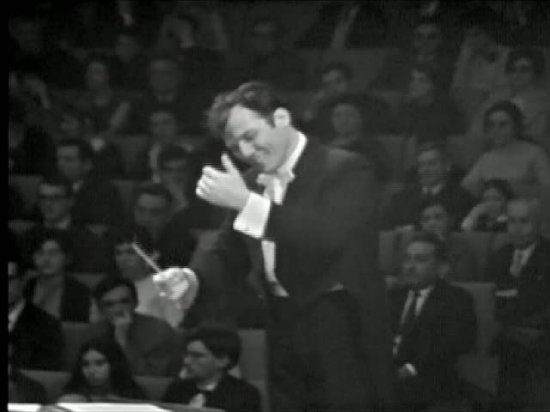
Your Opinions and Comments
Be the first to post a comment!